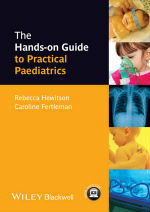You are called to attend an emergency caesarean section under general anaesthesia for Ms Jamila Chodhary who is 33+5 weeks pregnant and is having an antepartum haemorrhage, the CTG has suspicious features and the obstetricians are concerned about placental abruption. There has been no time for Jamila to receive steroids antenatally. The baby is born in good condition and requires no resuscitation at birth; however, you think that he appears pale. His birth weight is 2.1 kg. His hospital number is 3452178; the date today is 14/01/2015.
On admission to NICU, you find that he is hypotensive (mean blood pressure 30 mmHg). He is tachycardic and still appears pale, with a capillary refill time of 2.5 sec centrally. His temperature is normal and he has no signs of respiratory distress apart from tachypnoea (respiratory rate 60).
-
1. Prescribe what you would like to give to this baby in terms of initial fluid management.
Show Answer
Correct answer:
This baby is showing signs of shock and therefore you want to give a fluid bolus of 10 mL/kg of 0.9% sodium chloride.
His birth weight is 2.1 kg; therefore prescribe him 21 mL of 0.9% sodium chloride as a bolus.
-
2. As you are inserting the canula, you take off blood for partial septic screen (because his shock may be secondary to neonatal sepsis) and group and save (because his shock may be secondary to blood loss due to placental abruption). You also take a venous blood gas sample and notice that his haemoglobin on the gas result is 89 g/L. You decide to give him a blood transfusion; what would you prescribe for him?
Show Answer
Correct answer:
The amount of blood to prescribe for a neonate who requires a transfusion is normally 10–20 mL/kg. You should prescribe him 10 × 2.1 = 24 mL of blood. This should usually be given at a rate of 5 mL/kg/hour = 10.5 mL/hour.
Call the blood transfusion lab and ask for a 'paedipak'.
-
3. His mean blood pressure, heart rate and capillary refill time improve following the fluid bolus. You do not think he requires another fluid bolus. Prescribe maintenance fluids for him.
Show Answer
Correct answer:
The volume of fluid required varies depending on the infant's day of life, as does the requirement for additives such as sodium and potassium in the fluids.
The standard fluid used for maintenance in neonates is 10% dextrose. Many neonatal units will use the following values as a typical volume of fluid likely to be required:
Day 1: 60 mL/kg/day
Day 2: 90 mL/kg/day
Day 3: 120 mL/kg/day
Day 4: 150 mL/kg/day
Neonates do not usually require any additives to their fluids at day 1 of life but may need sodium and/or potassium adding to their fluids by day 2.
For this baby, you should prescribe 60 × 2.1 = 126 mL in 24 hours
Hourly rate = 126/24 = 5.3 mL/hour
-
4. On day 2 of life, you decide to start adding sodium and potassium to his fluids. His sodium is 135 and potassium 3.9 and therefore you decide to add 3 mmol/kg/day of sodium and 1 mmol/kg/day of potassium.
Show Answer
Correct answer:
The normal daily intake requirements for a neonate are as follows:
Sodium: 2–6 mmol/kg/day
Potassium: 1–3 mmol/kg/day
The amount of sodium and potassium that you add to a baby's fluid will also depend on their serum values. So for this baby, you want him to receive:
3 × 2.1 = 6.3 mmol of sodium per day
and 1 × 2.1 = 2.1 mmol of potassium per day.
However, the nurses will need to add these to a bag of plain 10% dextrose which comes in 500-mL bags. You therefore need to prescribe the amount that they must add to a 500-mL bag in order to get the correct concentration and then prescribe the rate at which you want them to infuse the fluid.
In this example, you want the baby to be receiving 90 mL/kg/day of fluid because he is now in day 2 of life.
Total volume of fluid in 24 hours = 90 × 2.1 = 189 mL
Rate of fluid = 189/24 = 7.9 mL/hour
If you want the baby to receive 2.1 mmol potassium and 6.3 mmol of sodium in that 189 mL of fluid then how much of each of these do the nurses need to add to the 500-mL bag?
Potassium: 2.1 mmol in 189 mL means 2.1/189 mmol in 1 mL = 0.011 mmol. This means that for 500 mL you need 0.011 × 500 = 5.5 mmol of potassium chloride in a 500-mL bag.
Sodium: 6.3 mmol in 189 mL means 6.3/189 mmol in 1 mL = 0.033 mmol. This means that for a 500-mL bag, you need 0.033 × 500 = 16.7 mmol of sodium chloride.
When you prescribe the new bag of fluid, make sure that you cross off the bag from the previous day.
See the model answer fluid prescription chart for an example of how to do this.

